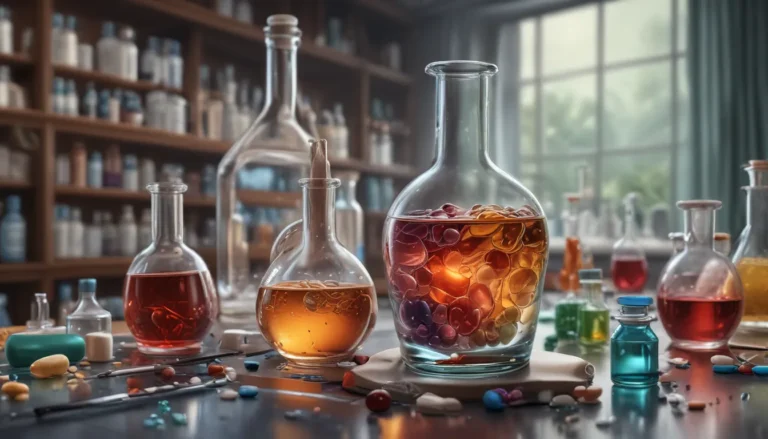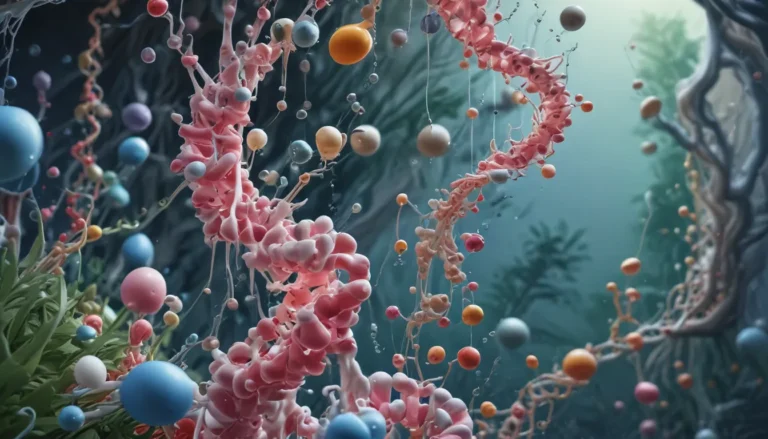A Note About Images: The images used in our articles are for illustration purposes only and may not exactly match the content. They are meant to engage readers, but the text should be relied upon for accurate information.
Welcome to the captivating world of anodes, where chemistry meets technology in an electrifying blend of science and discovery. Anode, a crucial element in the realm of electrochemistry, plays an essential role in powering batteries, driving chemical reactions, and protecting metal structures from corrosion. Join us as we unravel the mysteries of anodes and unearth 13 intriguing facts that shed light on this fundamental component of the chemical world.
Unlocking the Power of Anodes
- Anodes are indispensable in various processes, such as batteries and electrolysis, where they facilitate the flow of electrons and drive chemical reactions by attracting charged particles.
- Sacrificial anodes act as superheroes for metal structures, sacrificing themselves to protect against corrosion and diverting the corrosive process.
Delving Deeper: What Exactly is an Anode?
An anode serves as an electrode that allows conventional current to flow into a polarized electrical device, playing a vital role in electrochemical processes.
The Crucial Role of Anodes in Electrochemical Processes
Anodes attract negatively charged particles (anions) and play a pivotal role in facilitating a wide range of chemical reactions essential for various industries.
Exploring the Diverse Materials of Anodes
Anode materials vary depending on the application, with common materials including graphite, lithium, zinc, and aluminum.
Anodes in Action: Applications in Batteries and Electrolysis
- In batteries, the anode is where oxidation occurs, releasing electrons that flow through an external circuit.
- In electrolysis, the anode is the positive electrode where oxidation takes place, leading to the discharge of ions.
Shielding Structures with Sacrificial Anodes
Sacrificial anodes are utilized to protect metal structures from corrosion by sacrificing themselves to divert the corrosive process.
Preserving Metal Structures with Anode Systems
Anode systems are employed in cathodic protection to prevent corrosion of metal structures submerged in water or buried underground.
Illuminating the World with Anodes in X-ray Tubes
In X-ray tubes, the anode is a rotating disc made of tungsten that generates X-rays when bombarded by high-speed electrons.
Deciphering the Polarity of Anodes
The anode is typically designated as the positive electrode, although variations in naming conventions can occur depending on the context.
Anodes in Electronic Components and Fuel Cells
- Anodes are commonly found in electronic components such as diodes, vacuum tubes, and light-emitting diodes (LEDs).
- In fuel cells, the anode facilitates the oxidation of fuel, generating a flow of electrons that can be harnessed as electrical energy.
Harnessing the Power of Anodes in Galvanic Cells and Electroplating
- In galvanic cells, the anode is the electrode where oxidation occurs, producing a flow of electrons through an external circuit.
- In electroplating, the anode serves as the source of metal ions that are deposited onto the object being plated.
Embracing the Marvels of Anodes
Anode is a fascinating element in the field of chemistry, with a multitude of applications and intriguing facts associated with it. Its role in various industries and its impact on everyday life make anode a cornerstone of modern science and technology.
Exploring Anodes: Frequently Asked Questions
- What is an anode? – An anode is the positively charged electrode that supports oxidation and various chemical reactions in electrochemical cells.
- Is an anode the same as a cathode? – No, an anode and cathode are distinct electrodes with different charges in an electrochemical cell.
- How does anode oxidation prevent corrosion? – Anode oxidation, or sacrificial anode protection, sacrifices a more reactive metal to protect structures from corrosion.
- What are common applications of anodes? – Anodes are used in batteries, electroplating, electrolysis, and various industries such as automotive and electronics.
- Can anodes be recycled? – Yes, anode materials can be recycled, extracting valuable metals and conserving resources.
- What are the different types of anodes? – Types of anodes include sacrificial anodes, impressed current anodes, and MMO anodes, each with unique properties and applications.
In conclusion, anodes are not just passive elements in the world of chemistry; they are dynamic catalysts that drive innovation, protect structures, and power essential technologies. By understanding the role of anode in various processes, we gain a deeper appreciation for the intricate workings of the chemical world around us. Join us on this enlightening journey as we uncover the marvels of anode and its impact on our everyday lives.






